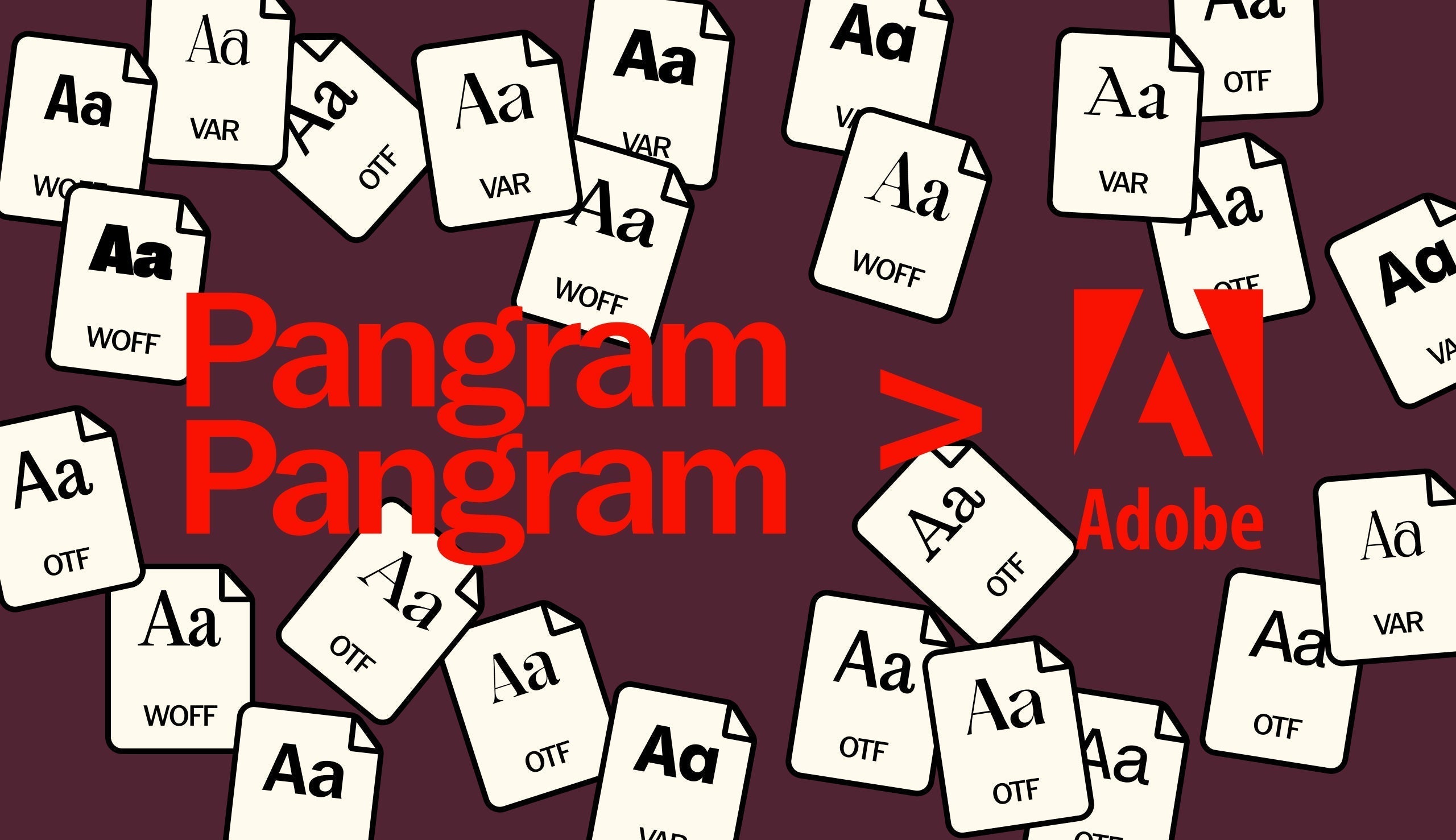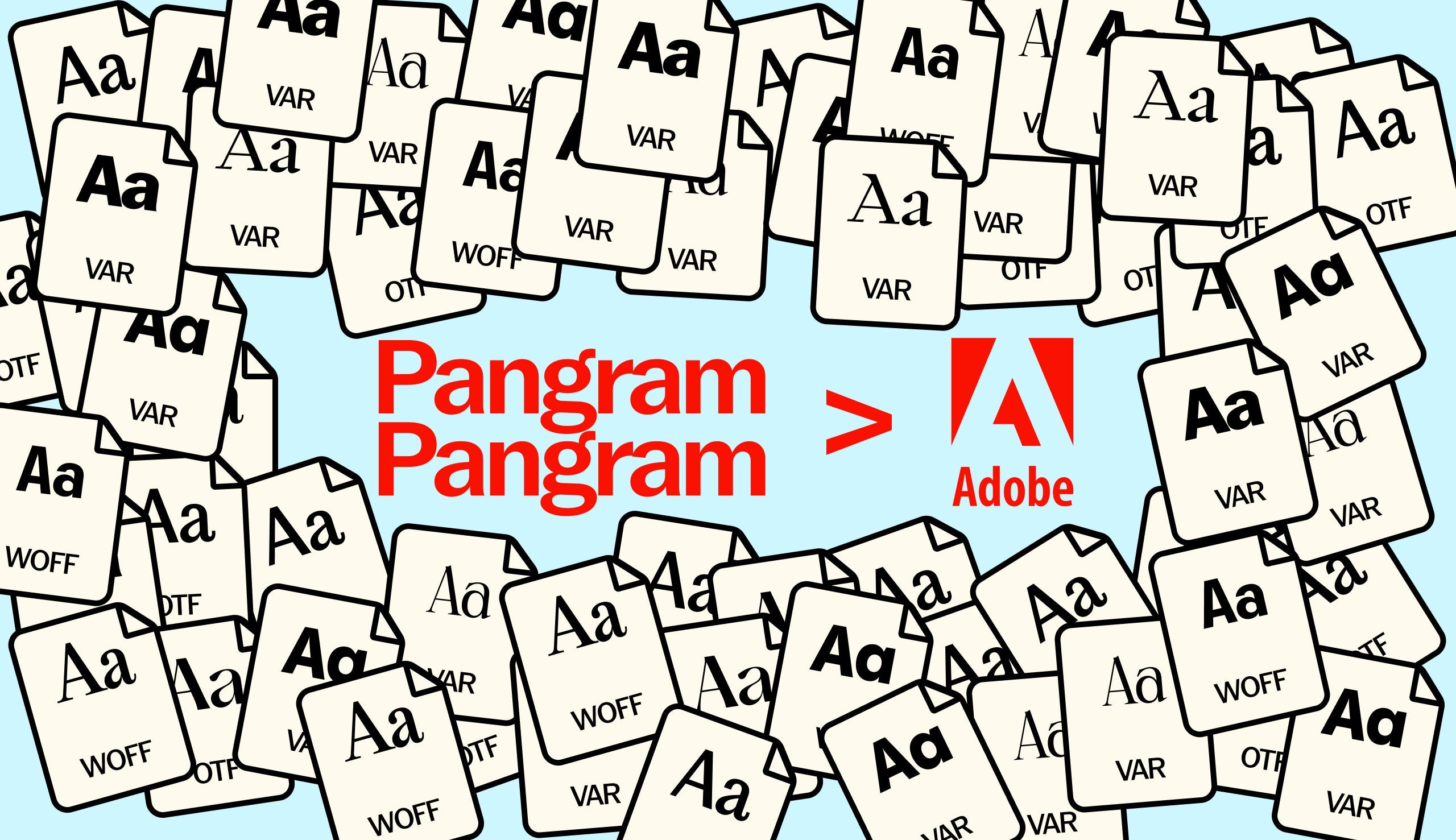The state of play only seems to be getting better.
We’re super thrilled to be chatting again with the one and only Francesca Bolognini, the creative mind behind Pangram Pangram’s latest typographic creation, PP Playground – the hero typeface of its namesake sandpit, The Pangram Playground – uncovering its inspiration, creative process, and design philosophy.
A contemporary script font that reimagines the classical Copperplate calligraphic style for the new age, PP Playground is a remarkable balancing act between traditional reference and design modernity – especially considering the role of experimentation and play in shaping the typeface’s character. Francesca takes us on a bit of a journey through the intricacies of typeface design, chatting through PP Playground ’s two sets of capital letters, the historical and cultural influences that shaped its design, and Francesca’s personal favourite glyphs. So, shall we crack on?
Side note: PP Playground is free to try today, with licences starting at only $40 🎲
Hello Francesca! How’s everything going?
Hello Alice! Everything is well, thank you.
What was the inspiration behind creating Playground, and how did it evolve from the research done for the wider Pangram Playground world?
I began designing the PP Playground with a focus on homonym branding. When I received it, Mat already had a well-defined concept, and I used the visual elements and inspirations of the brand to start my sketches.
I tested all the original drawings next to the playground symbol—the rasterized image of ‘the fox jumping over the dog’. The first sketches of what became PP Playground felt like a good fit, although looking back at it now, the design is significantly different from where it started.



Can you elaborate on the process of reinterpreting the classical Copperplate calligraphic style into a contemporary script font like Playground?
The calligraphic tool used to make Copperplate is a very pointed and flexible nib that can produce very thin, fine lines and thick ones. When pressed down, the nib’s tip expands and separates into two parts.
This nib flexibility gives the skilled calligrapher lots of freedom, which is why Copperplate is such an elegant, expressive, and ornamental script – and why there are endless ways to interpret its graphic elements today. In Playground, we introduced some geometric elements, like definite horizontal lines in most of the bars, which can connect the uppercase to the ascenders, for example. The stems have a 30° angle when joining the horizontal lines. We deliberately experimented with the script’s connectivity and rhythm. We believed it would be more interesting if it were not always connected, allowing for moments of pause.
How did you balance the traditional calligraphic references with modern design elements in Playground?
We didn’t want to recreate a specific historical copperplate sample.
So, despite using classic references for inspiration and a general design structure, we ensured the design looked original and unique
PP Playground is also completely digital. All of the shapes were designed digitally despite initial preparatory sketches.


What role did experimentation and play have in shaping the design of Playground , considering its association with the Playground world?
The copperplate script’s essence contains unique conditions for play and experimentation that other styles lack (and this might be a reason why I am a big fan). The project’s core lies in the experimentation and playfulness of letters connecting through loops, lines, wiggles, and turns. This style allows letters to move freely, and playing with shapes enables the full expression of its lively yet elegant design.


Playground offers two sets of capital letters. What inspired the design of each set, and how do they differ in terms of style and usage?
Going back to the metaphor of playing, we can imagine the first and basic set is for a more adult or classical game, whereas in the second set, which is the swash, we had even more adventurous fun and introduced more generous curves and expressive loops.
Were there any specific historical or cultural influences that informed the design of Playground, beyond the classical copperplate style?
The primary reference was Playground’s branding, developed by Mat.
Then, two books guided me through the making of the Playgroundscript. The first is George Bickham’s The Universal Penman, where anyone can find cheap copies online. It is a collection of specimens of the best calligraphy masters in Bickam times. This book is an endless source of inspiration.
The other book is called Scripts by Steven Heller and Luise Fili. I love this book because it is not strictly historical. It is a collection of graphic treasures, mostly from Western countries at the beginning of the 20th century.
I mainly look at the French, British, and Italian samples. One page I particularly love contains gorgeous receipts from all sorts of shops, from dry cleaners to shoemakers. It is incredible to see the aesthetic care taken in the day-to-day monetary interactions of the time.


Are there any particular glyphs or characters in Playground that you're especially proud of? If so, what is the story behind them?
Each glyph is a labour of love and fun, of course. Numbers are historically more challenging in copperplate style, so we produced many iterations and two sets and a few alternates for almost each. Another reason we took extra care of the numbers is the production of PP Playground Dice.
How do you approach the design of script fonts differently from other types of typefaces?
The design process is very similar in terms of design decisions regarding weights, dimensions, spacing, usability, etc. The main difference is the greater freedom to play with the shapes, connection, and contrast.



In your dream scenario, where would you want to see Playground applied?
It’s great to see how the Playground brand and script work together. Similar experiments in fashion and design would be incredible, of course.
Or maybe scripts will one day return to play a very functional role in our daily commercial interactions, and I could have the privilege of seeing Playground used in a dry-cleaning invoice!
What’s next on the cards? Is there anything in the works that you can tease?
I started developing a monospace serif a few years ago and would love to be able to complete it this year.








